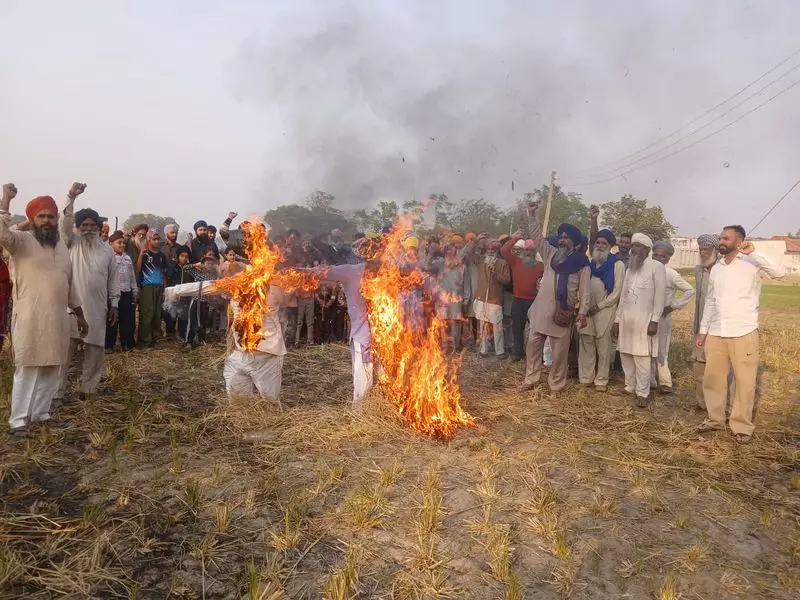
Farmers and agricultural workers across Amritsar district staged coordinated protests on Tuesday, burning effigies and raising slogans against the controversial Electricity Amendment Bill 2022. The widespread demonstrations reflected growing anxiety in Punjab's agricultural heartland about potential electricity privatization.
Widespread District-Wide Protests
According to reports from the Kisan Mazdoor Sangharsh Committee, which organized the protests, effigy burning ceremonies occurred simultaneously in over a dozen locations throughout Amritsar district. The protests were strategically timed to coincide with the ongoing parliamentary session where the bill is under consideration.
Major protest sites included Ajnala, Jandiala Guru, and several other rural areas where farmers expressed strong opposition to what they perceive as a move toward electricity privatization. Participants carried banners and placards demanding the central government withdraw the proposed legislation immediately.
Core Concerns About Agricultural Impact
Farmers voiced specific concerns about how the Electricity Amendment Bill could fundamentally change their access to affordable power. Agricultural electricity subsidies that have supported Punjab's farming community for decades now face potential elimination under the new framework.
Protesters argued that privatization would lead to significant increases in power tariffs, making farming economically unviable for many agricultural families. The timing is particularly sensitive given the existing challenges farmers face, including rising input costs and debt burdens.
Many participants highlighted that reliable, affordable electricity is essential for irrigation systems that support Punjab's agricultural productivity. Any disruption to this system could have cascading effects on food security and rural livelihoods.
Organizational Backing and Political Context
The protests were coordinated by the Kisan Mazdoor Sangharsh Committee, a prominent farmers' organization in Punjab that has been actively opposing central government agricultural reforms. The committee has warned of escalating protests if the government proceeds with the electricity legislation.
This mobilization occurs against the backdrop of previous farmer protests that lasted for over a year against three central farm laws, which were eventually repealed. The current electricity bill protests suggest continuing tension between agricultural communities and policy makers in New Delhi.
Local leaders emphasized that the protests would continue until the government provides clear assurances about protecting farmers' interests in the power sector. The widespread nature of Tuesday's demonstrations indicates significant grassroots organization and concern across Amritsar's rural communities.
Broader Implications for Power Sector Reform
The Electricity Amendment Bill 2022 represents one of the most significant proposed changes to India's power sector in recent years. The legislation aims to introduce more competition in electricity distribution, potentially allowing multiple suppliers to operate in the same area.
While proponents argue this could improve service quality and efficiency, farmers fear it will lead to the phasing out of cross-subsidies that have kept agricultural power tariffs artificially low. State electricity boards currently use higher commercial and industrial tariffs to subsidize agricultural and residential consumers.
The protests in Amritsar reflect broader apprehensions among agricultural communities across northern India who depend on affordable electricity for irrigation. Similar concerns have been voiced in other states where agriculture represents a significant portion of the economy.
As the parliamentary debate continues, the strength of farmer opposition in Punjab suggests the electricity bill could face significant political challenges. The coordinated nature of Tuesday's protests demonstrates that agricultural communities remain organized and ready to mobilize against policies they perceive as threatening their livelihoods.





